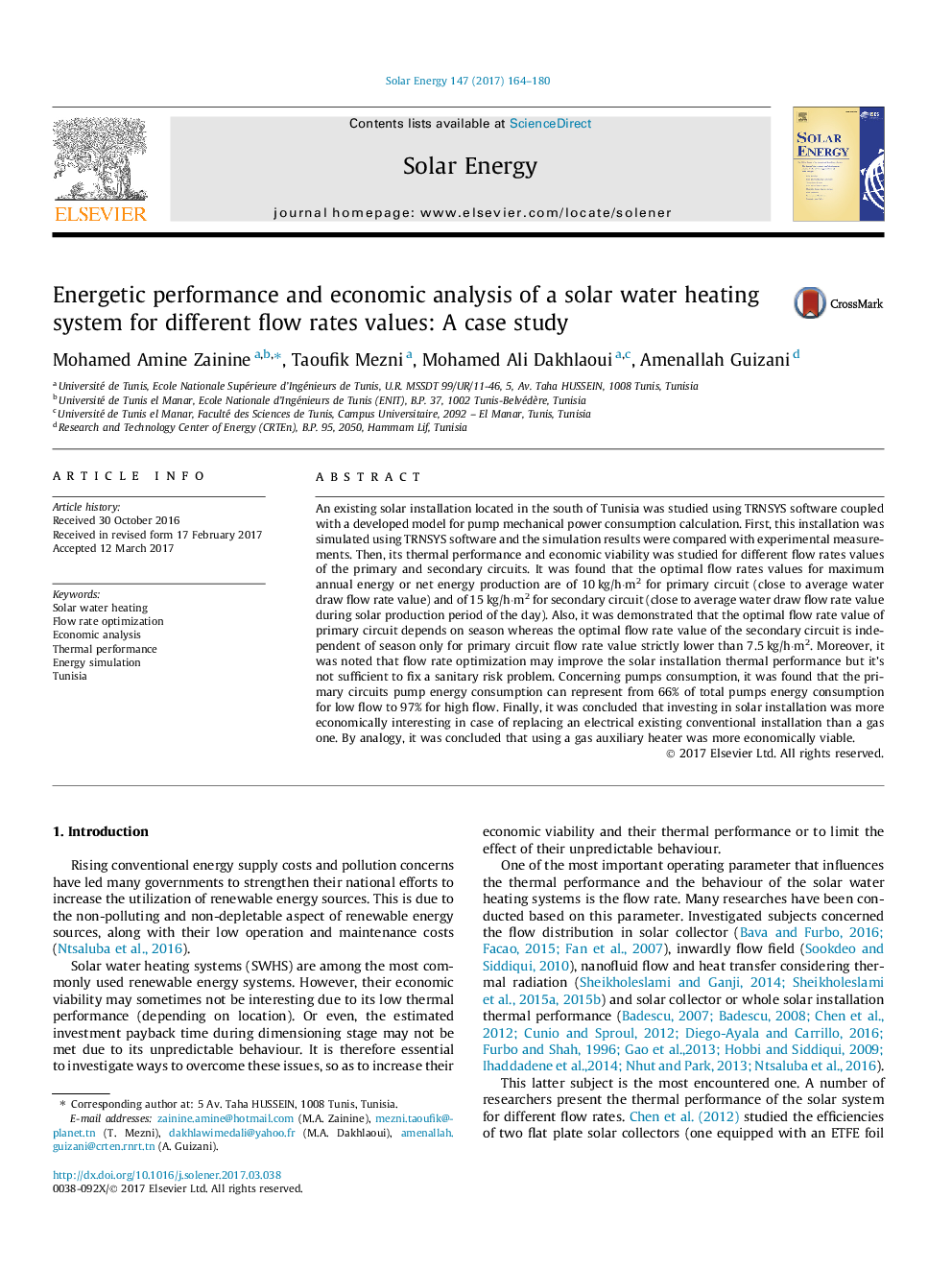| Article ID | Journal | Published Year | Pages | File Type |
|---|---|---|---|---|
| 5451198 | Solar Energy | 2017 | 17 Pages |
Abstract
An existing solar installation located in the south of Tunisia was studied using TRNSYS software coupled with a developed model for pump mechanical power consumption calculation. First, this installation was simulated using TRNSYS software and the simulation results were compared with experimental measurements. Then, its thermal performance and economic viability was studied for different flow rates values of the primary and secondary circuits. It was found that the optimal flow rates values for maximum annual energy or net energy production are of 10 kg/h·m2 for primary circuit (close to average water draw flow rate value) and of 15 kg/h·m2 for secondary circuit (close to average water draw flow rate value during solar production period of the day). Also, it was demonstrated that the optimal flow rate value of primary circuit depends on season whereas the optimal flow rate value of the secondary circuit is independent of season only for primary circuit flow rate value strictly lower than 7.5 kg/h·m2. Moreover, it was noted that flow rate optimization may improve the solar installation thermal performance but it's not sufficient to fix a sanitary risk problem. Concerning pumps consumption, it was found that the primary circuits pump energy consumption can represent from 66% of total pumps energy consumption for low flow to 97% for high flow. Finally, it was concluded that investing in solar installation was more economically interesting in case of replacing an electrical existing conventional installation than a gas one. By analogy, it was concluded that using a gas auxiliary heater was more economically viable.
Related Topics
Physical Sciences and Engineering
Energy
Renewable Energy, Sustainability and the Environment
Authors
Mohamed Amine Zainine, Taoufik Mezni, Mohamed Ali Dakhlaoui, Amenallah Guizani,
